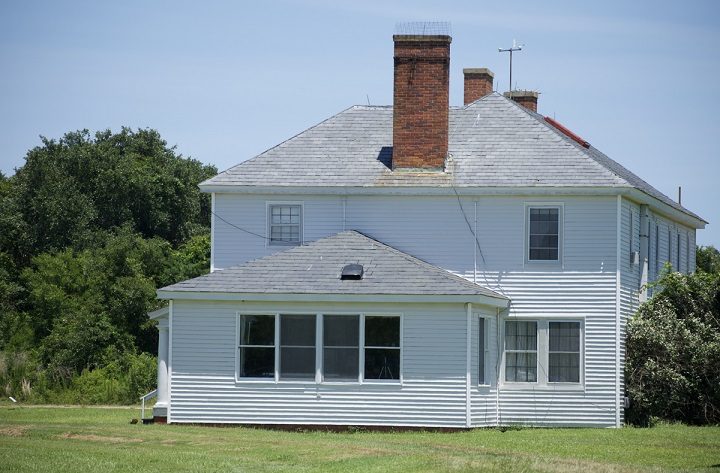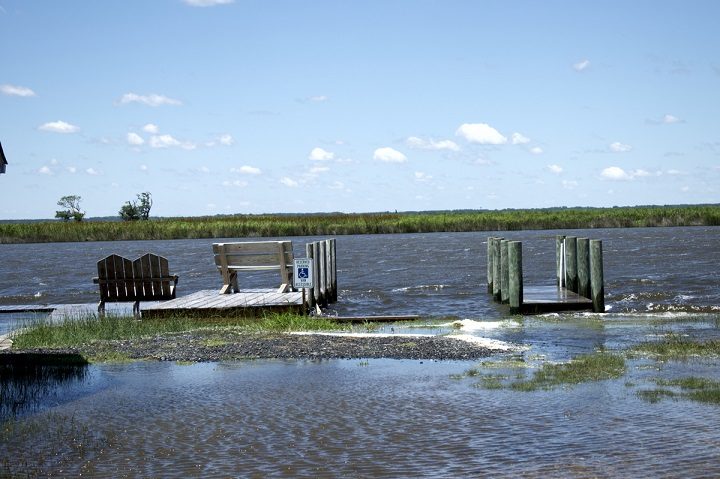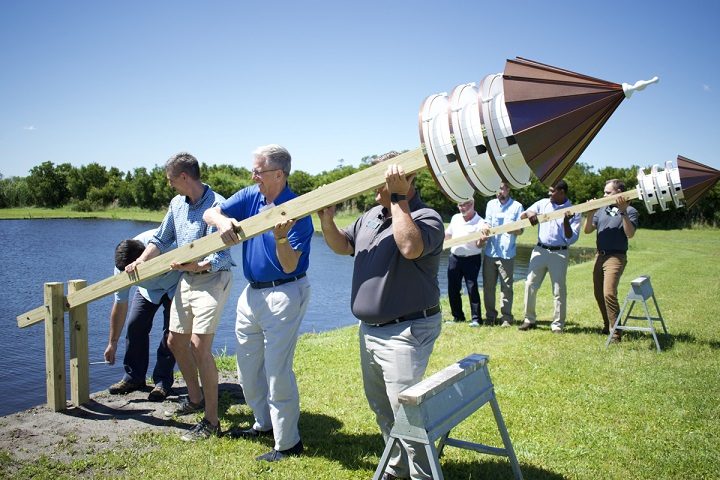
This is another in a series of reports on coastal resilience.
CURRITUCK COUNTY — For more than 100 years, the Pine Island Hunt Club was one of the premier hunting lodges on Currituck Sound. It’s now the Donal C. O’Brien Jr Sanctuary and Audubon Center, the first Audubon Center in the state, thanks to the 1979 land donation to the National Audubon Society from the last private owners of the club, the family of Winston-Salem developer and avid duck hunter Earl Slick.
Supporter Spotlight
The family managed the property until 2009 when Audubon North Carolina assumed responsibility. The 2,600-acre sanctuary that straddles the beach, marsh and wetlands of Currituck Banks is home to 170 bird species, seven amphibian species, 17 reptile species, 19 mammal species, more than 350 species of plants and a two-story hunting lodge built in 1913, according to Audubon.
There is a wide, tamped-earth trail along the sound that was once the road to Corolla. The guardhouse is still there, just north of the Sanderling Resort in Duck. At one time its guards decided who would get to drive the sand road to the village.

The sanctuary is a place where the wind paints waves of color in the marsh grass. In the maritime forests, the gnarled live oak creates a dense canopy where sunlight dapples the ground in shades of yellow. It’s also ground zero in North Carolina for the effects of climate change, a vulnerable barrier island where work is underway to adapt the infrastructure to the changing climate and create a hub of conservation, restoration, scientific research and resilience planning.
Conservation group Audubon North Carolina hosted an open house and tour of the hunting lodge and grounds Friday to highlight how climate change is affecting Currituck Sound and the Outer Banks and the ongoing work to adapt as part of its resilience initiative. Officials on hand stressed the urgency and the need to work together.
“I think deep down in the inner side of all of us we all have a great appreciation and love for nature. But we just don’t take the time. It’s something we’re going to get to. We take it for granted. And that is dangerous,” said Sen. Bob Steinburg, a Republican whose district includes Currituck County, during his remarks at the event.
Supporter Spotlight

Steinburg was joined by North Carolina Department of Environmental Quality Secretary Michael Regan, numerous northeastern North Carolina elected officials and Audubon representatives.
As part of the event, state and local officials participated in a ceremonial purple martin house raising near the impoundment pond west of the hunting lodge. Heavy rains the night before and a strong southwest wind had raised the water table almost to the surface, making the ground spongy, with water seeping out under participants’ every step. The pond’s surface was inches from the top of the impoundment.
Sanctuary Manager Robbie Fearn explained what was happening.
“These soils are getting softer and softer,” he said. “One of the big challenges that has really not been addressed about barrier islands is that you have the ocean coming up on one side and the sound on the other side. The water table sits on this pocket of saltwater underneath. As that come up, every time it rains, like it did buckets last night, that water has no place to go.”
Earlier in the day, those who spoke highlighted the need to work together to mitigate the effects of climate change.
“The marshes are critical habitat for thousands of wintering waterfowl and other wildlife,” said Andrew Hudson, executive director of Audubon North Carolina. “Audubon scientists have identified this place as in the top 2% of places in the hemisphere to protect for birds.”
He went on to explain how he felt Audubon North Carolina could protect the sanctuary and its neighbors from what’s happening along the coast.
“Through a combination of practical research, new hires and staff, on the ground conservation, restoration work and resilience planning, all made possible through the deep cooperation with our partners here. Our goal is to secure a bright future for the birds and the communities here,” he said.

DEQ Secretary Regan agreed. “Scientists have marked Currituck Sound as one of the most important points we have left for the study and preservation of many species of birds.”
Reagan also offered a cautionary message.
“These places remind us all of what an important job we all have to protect them. It’s easy to forget about the sacred trust of ours when we are sitting in an office or when we’re preoccupied in Raleigh,” he said.
In Steinburg’s call for greater cooperation, the senator noted that the lack of cooperation in the past had led to many problems that exist today.
“There has really been an ignorance and a failure on the part of a lot of folks to work together as stakeholders to try and address the many concerns we have in preserving what we know is beautiful and satisfying,” Steinburg said.
Hudson of Audubon North Carolina pointed to a large living shoreline project on the property south of the dock on Currituck Sound. A state Clean Water Management Trust Fund grant provided much of the funding for the project.
“We’re grateful for lawmakers continuing to support the trust fund. We think it is one of the most powerful tools we have,” Hudson said.
Numerous ongoing projects at Pine Island were designed to offset the effects of sea level rise.
“On the north end of the property, the gathering pavilion is being placed on a 4-foot dune,” Fearn said, adding that over time, the 4-foot elevation would be inadequate to stave off rising waters.
Fearn then pointed to where a new building would be placed. At one time, guides and employees were housed where there is now bare ground. The new building, once built, and the hunting lodge are to be designed for a much longer life.
“This beautiful 1913 building, the clubhouse … will go up on pilings. They (the two buildings) will go up 7 feet,” he said. “Sixty years from now this will all be salt marsh.”
The buildings, though, are designed to remain accessible with a boardwalk connecting them.
The vision of creating a resilient place for education and research is consistent with what Regan said he saw as the future for Pine Island.
“This sanctuary has over 2,000 acres … that serve as a living classroom for both current and future generations,” he said. “Both students and educators can come here and see hundreds of species of birds, plants, and it is at those moments that we either affirm or we spark an interest in science and discovery inspiring a lifetime of learning.”








